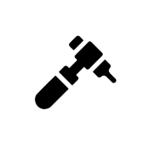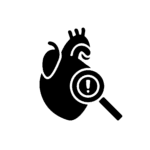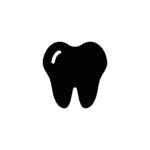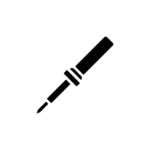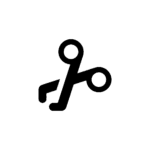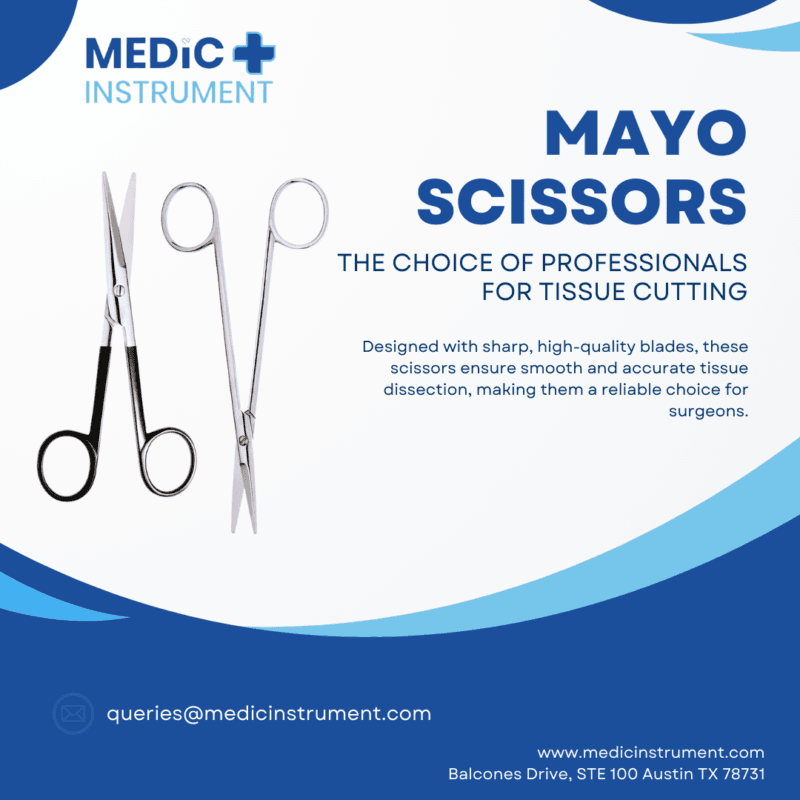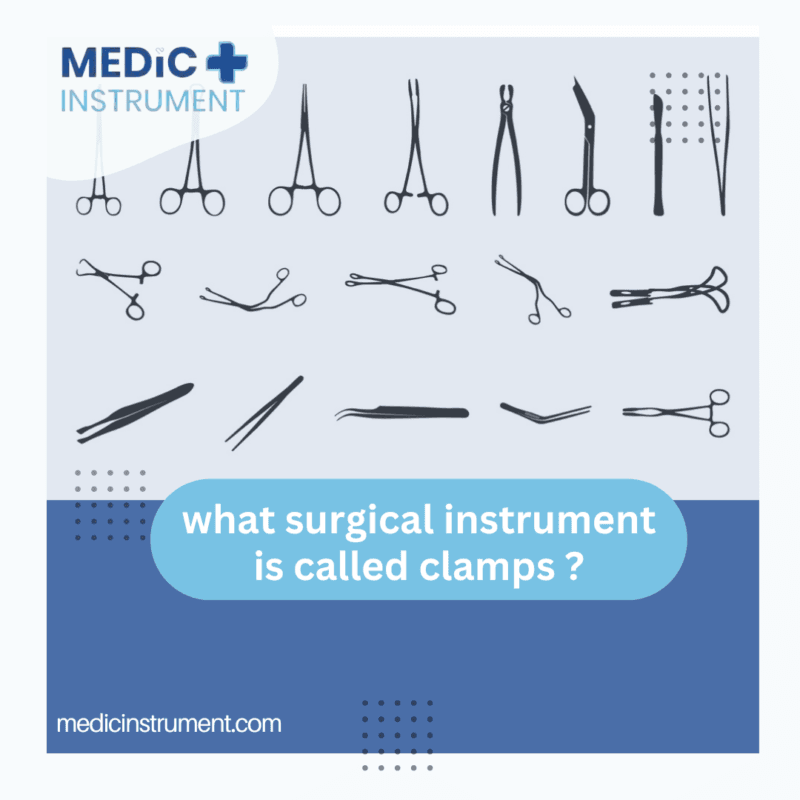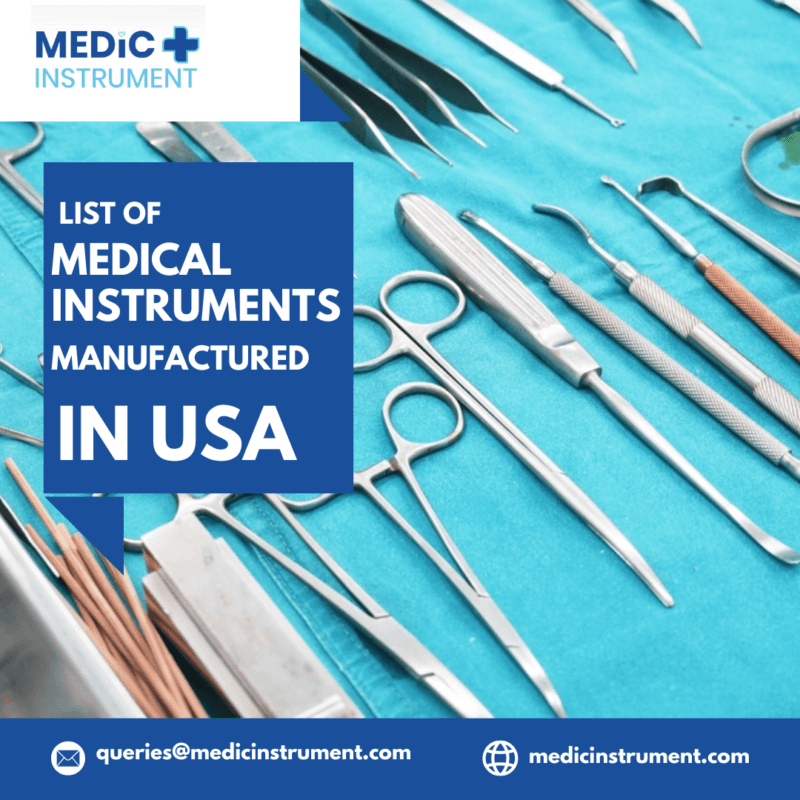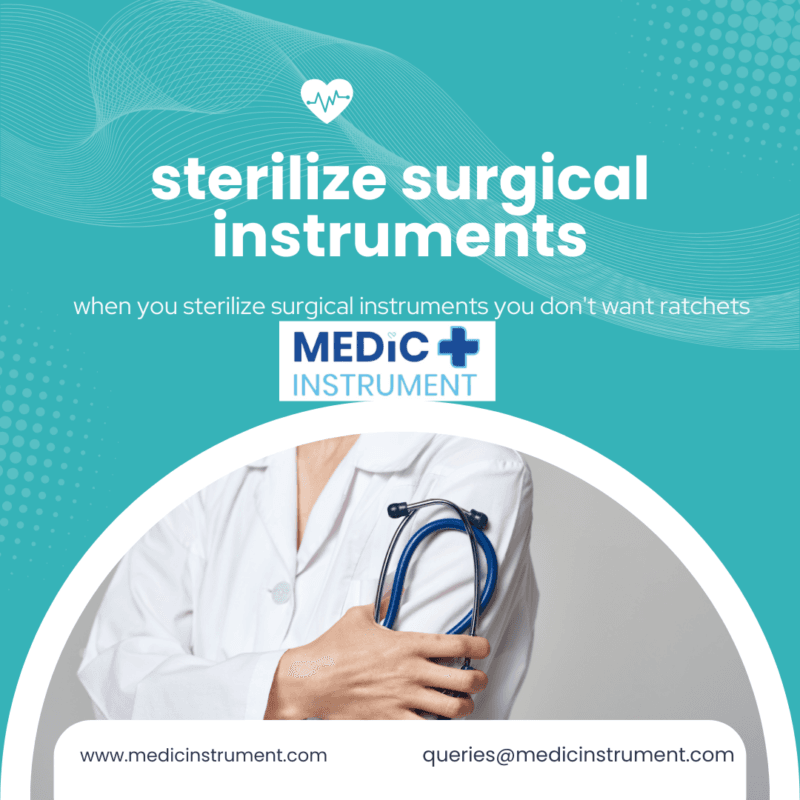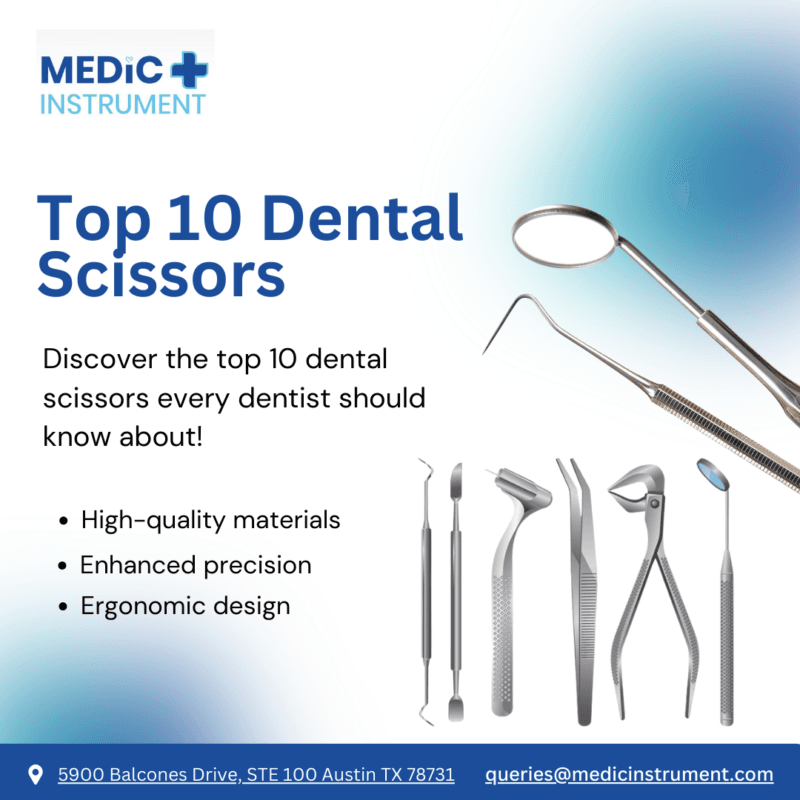Plastic Surgery Instrument: Set of Tools That Make It Work
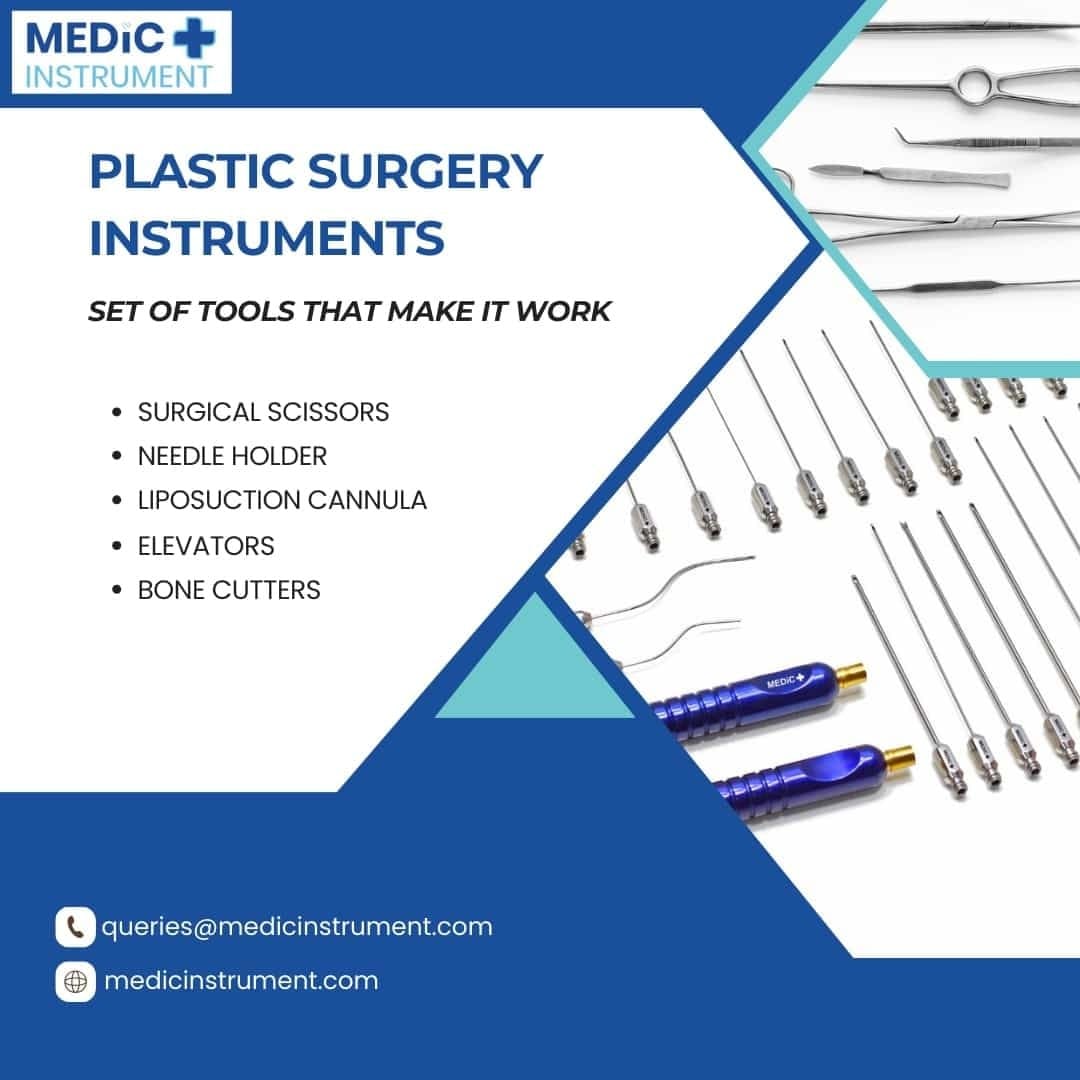
Let’s be clear: plastic surgery is more than just tweaking and tucking. It’s a high-risk art form, and the tools? They are the transformational instruments that ensure every incision is accurate and every result is spot on. If you believe it is all about the surgeon, you have obviously never seen a retractor in action. Let’s have a look at what Plastic Surgery Instrument are needed during the procedure:
Scalpel – The Key to Getting Started (Handle with Care!)
The scalpel is basic, sharp, and completely unforgiving. This is the crucial instrument in any surgeon’s toolbox. Scalpels, on the other hand, are optional in plastic surgery. Precision blades, such as the No. 15, are meant for facial surgery where a millimeter error can convert “artistic” into “what happened?” For larger procedures, like as skin grafting, the No. 10 blade excels, giving broad strokes without sacrificing elegance. And let’s get into the debate: reusable or disposable handles? Ones that exclaim, “I care about the environment,” whereas throwaway choices are all about ease and cleanliness. In any case, scalpels are serious business. They’re the tool doctors use to start and finish a masterpiece.
Surgeon’s Extra Fingers (Forceps)
Forceps are the pinchers of the surgical world, although they are far more elegant than that description implies. These bad boys handle tissues with such delicacy that a jeweler would be jealous. Adson forceps are ideal for tiny skin manipulation, but DeBakey forceps are gentle giants that can handle delicate tissues without leaving a mark. Then there’s the tissue forceps—designed to hold stronger layers—proving that sometimes, a little tooth (or two) is enough to get the job done.
Each cut with scissors requires precision and agility.
If scalpels are the swords of surgery, scissors are their elegant cousins. They cut, trim, and dissect with the finesse of a prima ballerina on stage. Metzenbaum scissors, for example, are long and slim, perfect for snipping delicate tissues with unparalleled delicacy. Iris scissors are tiny but ferocious, ideal for situations requiring extreme precision. What about tenotomy scissors? Let’s just say they’re the most detail-oriented artists in this surgical symphony. Each pair, whether curved or straight, helps to ensure that tissues are treated with the respect they deserve. Yes, there is an art to knowing when to cut and when to hold back.
Retractors make complex surgeries possible
Retractors may not be glamourous, yet they are necessary in all procedures. They separate tissues, giving surgeons a clear stage to work their magic. Skin hooks are a minimalist’s dream, small but powerful for facial and hand surgery. Senn retractors (one sharp end and one blunt end) are versatile enough to handle almost any small situation. What happens when the stakes are higher? Weitlaner retractors take over, self-retaining and ready to hold tissues in place for as long as necessary. They are the backstage staff of surgery, silently ensuring that everything runs well while the surgeon takes center stage.
Cannulas provide safe and effective fat removal.
The cannula is essential for liposuction (also known as body shaping). These slim tubes are where science meets art. The Mercedes tip cannula, with its three-port design, is the overachiever, providing constant fat removal with minimal effort. Tulip cannulas are kinder and softer, and they shine in delicate places like the face. Basket cannulas, on the other hand, have tiny serrations that cut through resistant fat like a pro. These instruments do more than just remove fat; they shape and refine, demonstrating that even aspiration can be an art form.
Cannulas provide safe and effective fat removal.
The cannula is essential for liposuction (also known as body shaping). These slim tubes are where science meets art. The Mercedes tip cannula, with its three-port design, is the overachiever, providing constant fat removal with minimal effort. Tulip cannulas are kinder and softer, and they shine in delicate places like the face. Basket cannulas, on the other hand, have tiny serrations that cut through resistant fat like a pro. These instruments do more than just remove fat; they shape and refine, demonstrating that even aspiration can be an art form.
Specialized Tools (since apparently, not all surgeries can be done with a hammer)
Plastic surgery, like its instrument, does not fit everyone. Dermatomes are essential for skin grafting, slicing flawless layers of flesh with unsettling accuracy. Rhinoplasty instruments include osteotomes for bone sculpting and nasal speculums for a clear view of the surgical stage. Facelift equipment, including hooks and scissors, are designed for precise lifting and tightening. Breast surgeries? Combining illuminated retractors and electrocautery devices improves precision significantly.
Why Advanced Technology Is Critical to Achieving the Best Surgical Results
Plastic surgery devices evolve at a faster rate than your phone’s operating system. CO2 lasers are reinventing skin resurfacing with pinpoint precision and minimum bleeding. Ultrasound-assisted liposuction (UAL) is a multipurpose procedure that removes fat while tightening the skin. What about robotic-assisted microsurgery? That’s straight out of a science fiction film, with accuracy so exquisite it could put a watchmaker to shame. These technologies are more than just cool; they have the potential to transform outcomes and patient happiness.
The Hygiene Factor (Why Sterilization Is Important)
All this discourse about tools would be meaningless without sterilization. After all, even the most advanced instrument is useless unless it is clean. Autoclaves, chemical sterilants, and single-use choices keep everything spotless and ready to use. It isn’t the most glamorous aspect of surgery, but let’s face it: no one signs up for a procedure without it
Personalized instruments for perfect surgical outcomes every time.
The future of plastic surgery instrument revolves around customization. 3D-printed devices designed for specific surgeons or operations are already gaining traction. AI-guided tools are designed to deliver real-time feedback, pushing precision to new heights. The combination of technology and artistry promises a future with boundless possibilities and reliably faultless results.
Here’s why. Surgery is all about the tools.
What causes a transformation? It’s all about having the correct surgical instruments. From scalpels and cannulas to lasers and robots, these technologies help surgeons make their fantasies a reality. So, the next time someone brags about a fantastic nose job or a perfectly sculpted jawline, remember to give credit to the tools that made it possible. Who knew? It turns out that surgical masterpieces are all about the instruments; surgeons simply receive the credit (wink, wink




